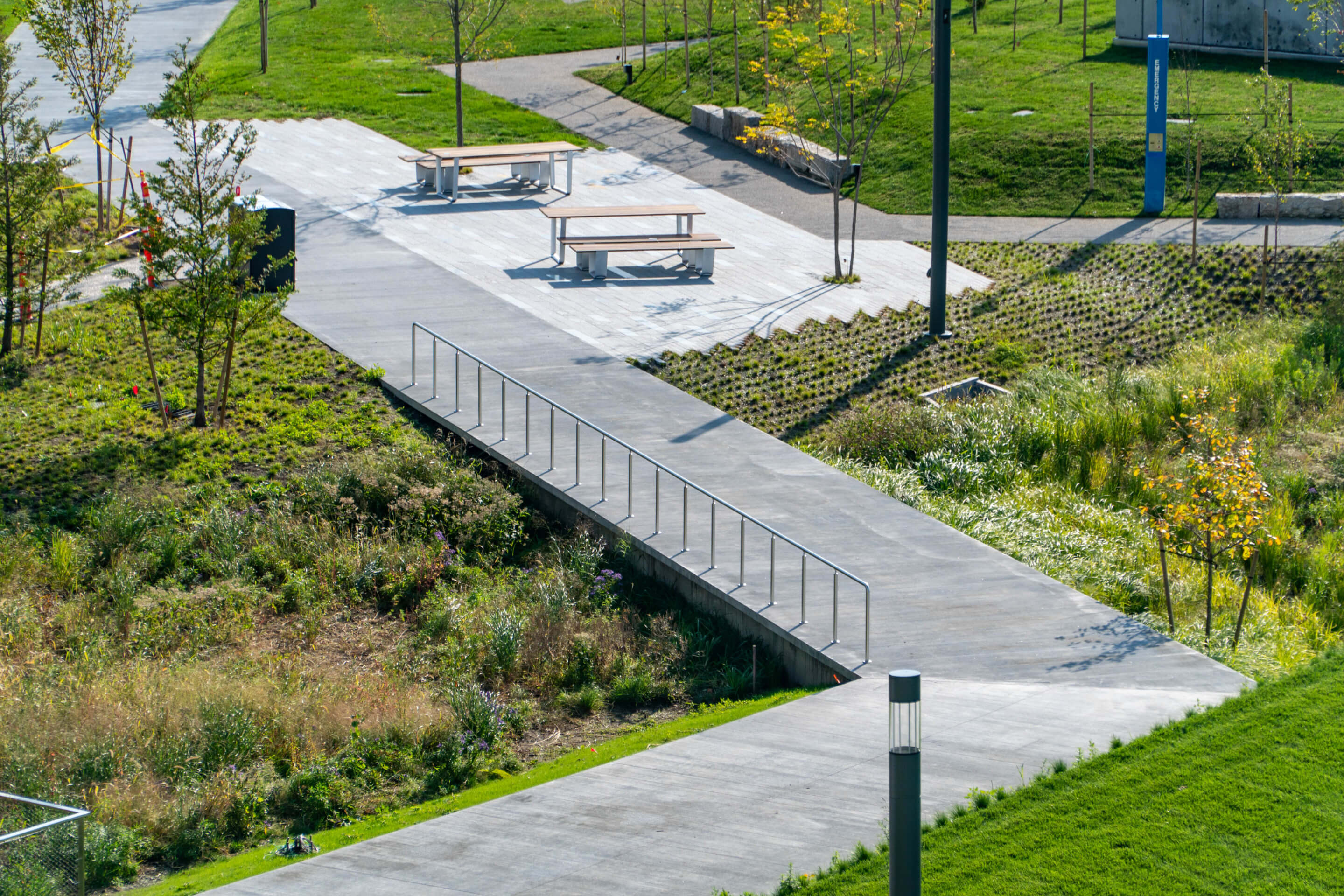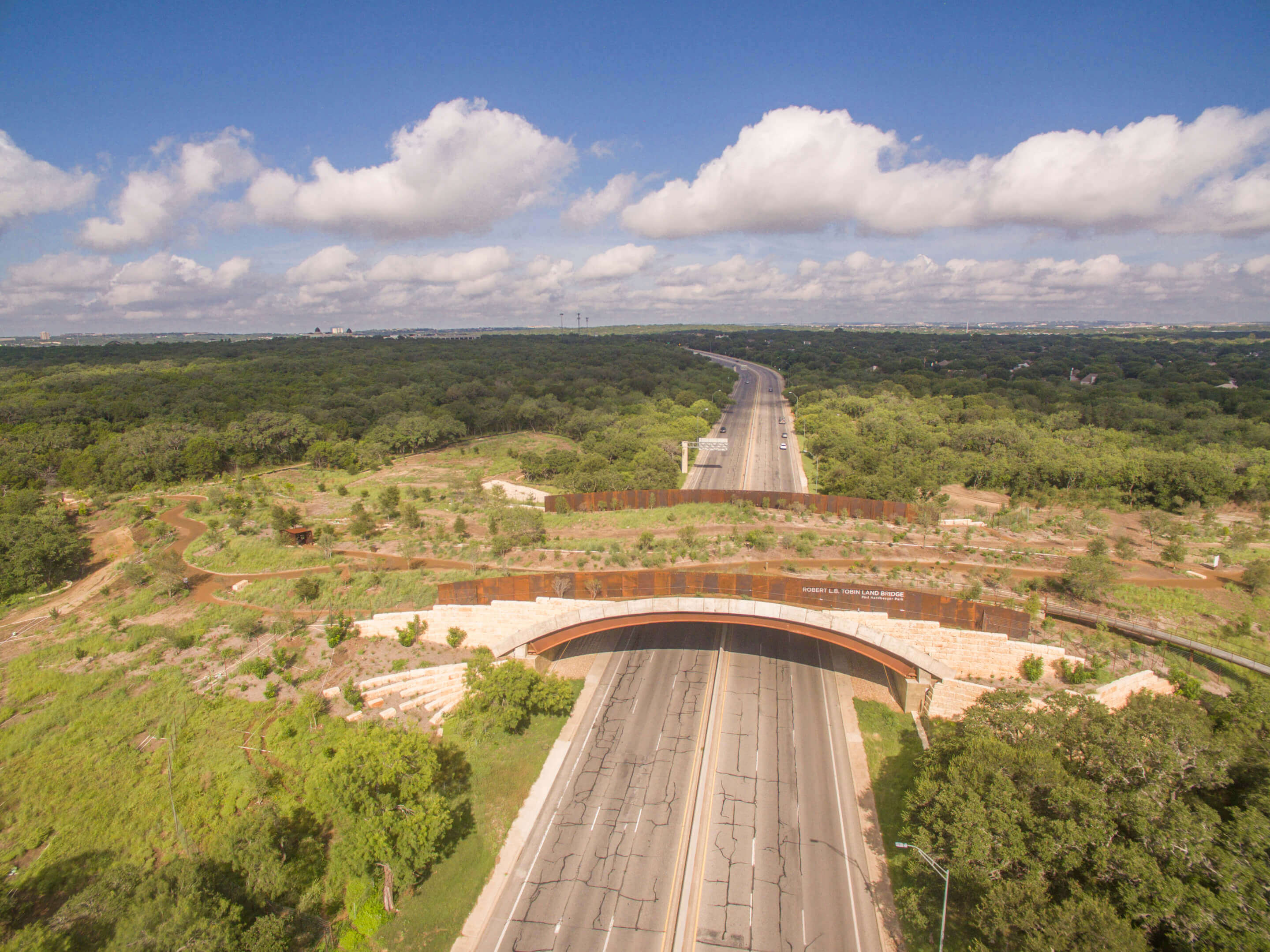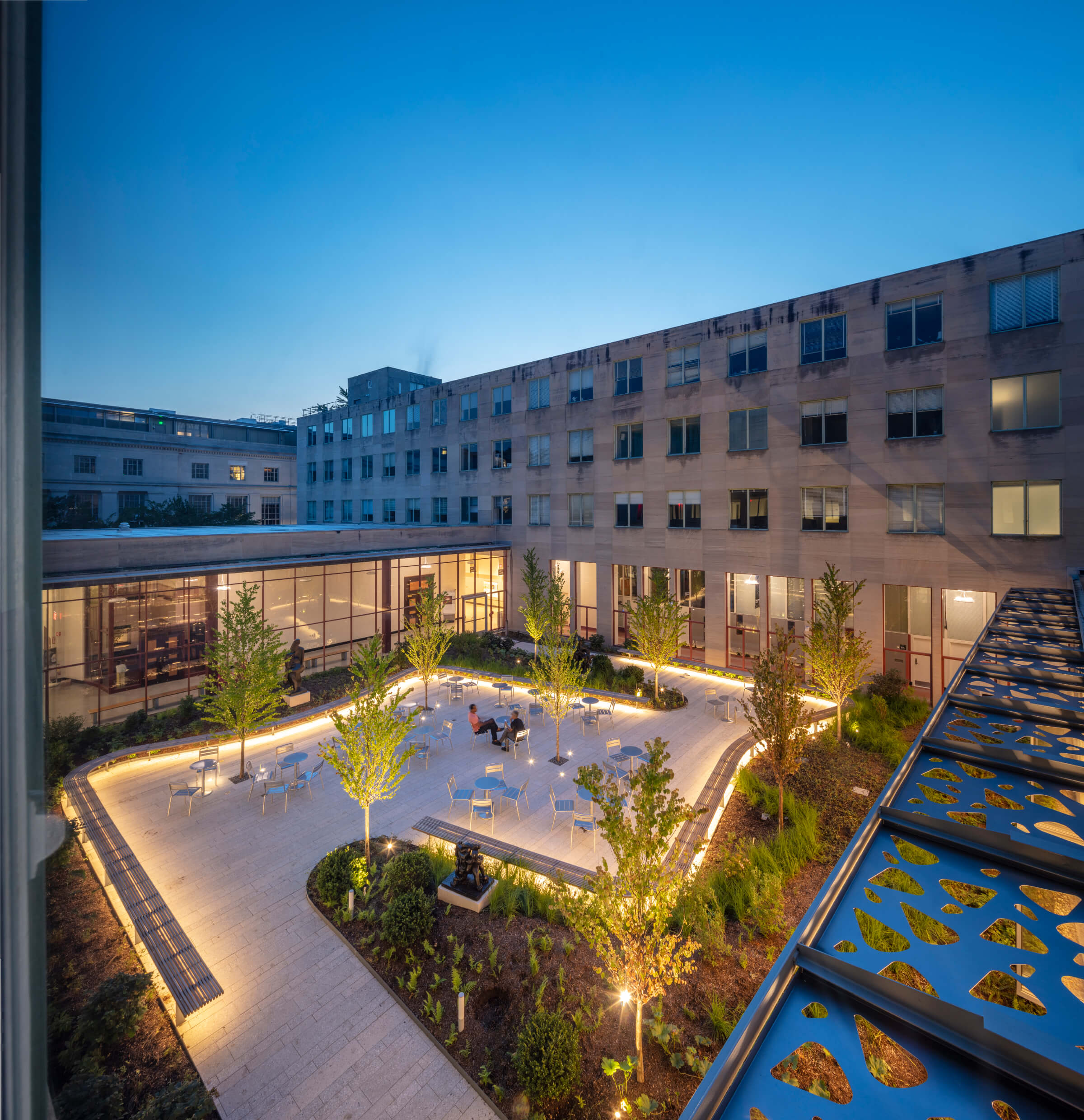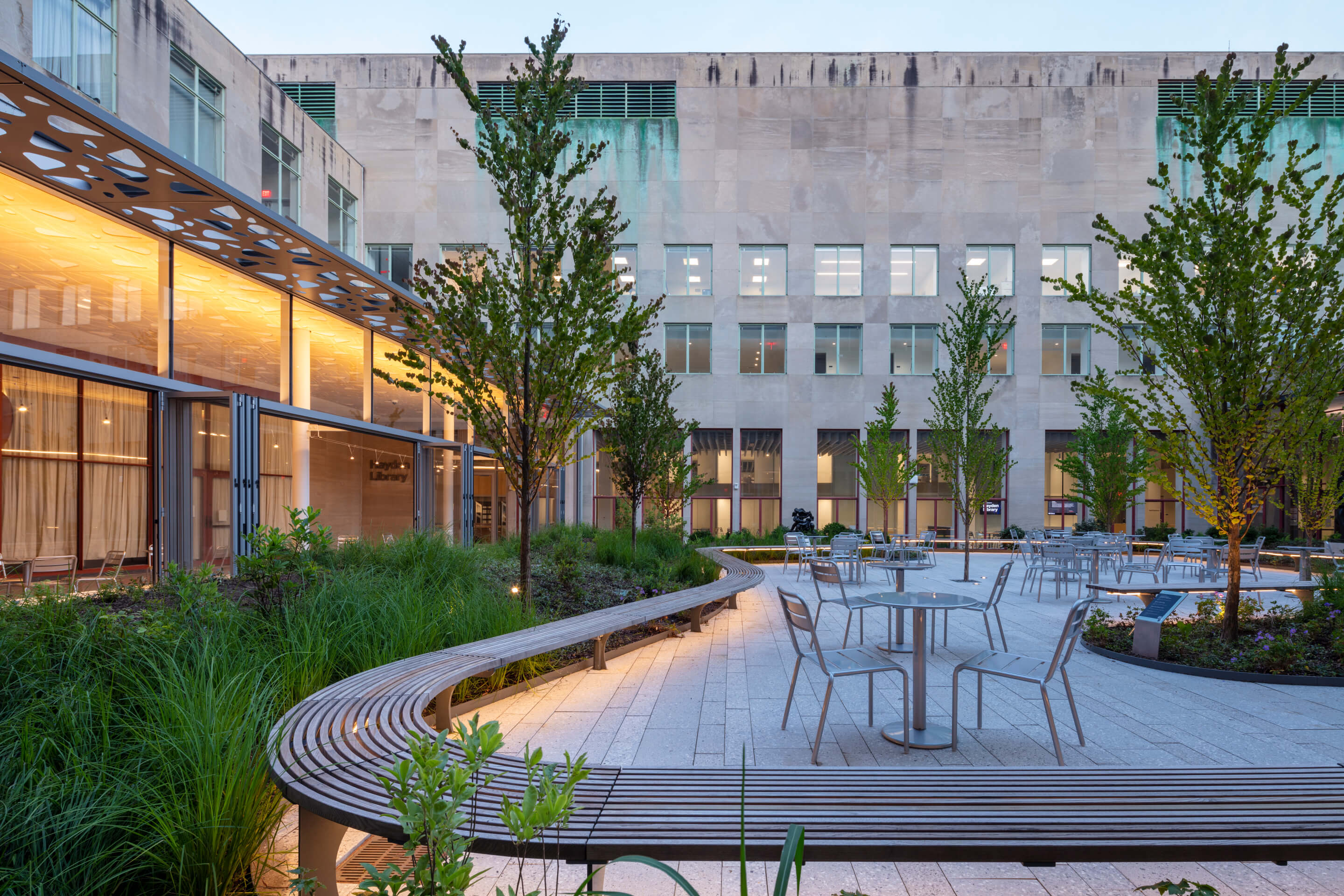Over the summer, the American Society of Landscape Architects announced that it would bestow its annual firm award on the Cambridge, Massachusetts–based office Stimson. The practice, founded by Stephen Stimson in 1992, produces sharp work that straddles the urban and rural realms. This quality is baked into the firm’s operations: Stimson and his wife and co-principal, Lauren, maintain a farm–cum–living laboratory in central Massachusetts, just north of Worcester, while co-principals Edward Marshall, Joe Wahler, and Glen Valentine oversee the Cambridge office.
AN contributor James McCown met with Valentine in the courtyard of MIT’s Hayden Library to discuss the award and reflect on the studio’s growth. Valentine had suggested the meeting place, a pleasant outdoor space conceived by Stimson as a nine-square grid on which to plot plantings and select pieces from MIT’s collection of 20th-century sculpture. Twin curvaceous berms lent a touch of whimsy to the space.
James McCown: First, congratulations on the award. Talk to me about the uniqueness of the firm.
Glen Valentine: Sure. It’s a commitment to agricultural and rural life. Steve Stimson, the founder of the firm, has deep roots in New England, going back ten generations. A few years ago, he was able to buy a farm in Princeton [Massachusetts], which is very close to the [family’s] ten-generation farm in Charbrook. He turned the Princeton farm into a homestead for him and his family.

For Steve, it’s been a sort of reclamation of his past. Charbrook allowed him to do some new things, like build a nursery and raise livestock for organic, grass-fed beef and lamb and really design the whole space both as a working farm and a laboratory for us.
So you use plantings from the farm in your projects?
Yes, we can use the trees from the nursery on the farm. And now there’s a studio under construction there, which will be completed this fall. The [firm’s] connection with the nursery, with all the fields, is going to be even stronger than it already was. It’s all organic, and we can push different species. The nursery lets us try a species like gray birch, which you can’t find in the industry. Both institutional and residential clients appreciate that they know where the trees are coming from. They know who took care of them.
How does a firm with such a deep and abiding belief in rural, agrarian life do urban projects like the one we’re sitting in right now?
We fully embrace a modern contemporary aesthetic, but we try to make it feel almost relaxed. So we’re in the Lipchitz Courtyard, and there are three works by the sculptor Jacques Lipchitz.
Was that your idea, to base a garden around these pieces?
No, but I’ll take credit for it. [laughs] The sculptures were here already but were randomly placed around. And we said, “They should really be in a conversation with one another,” and we worked very hard to site them [accordingly]. It’s a very contemporary space, which comes through in the nine-square grid that [underpins] it. At the same time, we had to consider the practicalities of growing trees. We’re sitting above a part of the Hayden Library, and there wasn’t enough room for a membrane and paving. So we raised the courtyard about 18 inches, which gives you eye-level views into the library. The garden has a contemporary feel that isn’t imposed so much as [it is] a natural consequence of thinking about certain practicalities.

Name another new project that you’re particularly proud of.
I’d say the Pine Tree Preserve at Boston College. One of the things we really pride ourselves on is building relationships with institutional clients. I’ve been working at Boston College for about 12 years now, on ten or so projects. And they’ve all been very specifically related to quads and buildings and fields. But this Pine Tree Preserve is a collaboration. It’s a parcel of land adjacent to a reservoir that for the past hundred years has been fenced off. It’s owned by the Metropolitan Water Resources Authority. And they, in an agreement with Boston College, decided to take down the fence, open it up, and make it into a public park.
What are some architecture firms with which you’ve had especially good, collaborative relationships?
We’ve worked a lot with Centerbrook [Architects + Planners] on campus projects. That’s been a big focus for our practice. We recently worked with Behnisch [Architekten] on the Harvard Science and Engineering Complex.here we really tried to make the stormwater components a strong element of the design. Lake|Flato out in Austin has also been a great partner of ours; we’re also doing some campus work with them. But we did a master plan for a 300-acre park in San Antonio—Hardberger Park [Phil Hardberger Park Conservancy]—where they also designed a building. We just finished a big land bridge over the highway that connects two sides of the park and gives wildlife a safe place to cross.

Your website says: “We draw by hand and we embrace slowness.” Do you not use computers? [laughs] And does embracing slowness scare off some clients who have a deadline?
That is a great question. Slowness forces you to think carefully about what it is you’re doing. It also [gets] into our whole idea of growing things ourselves, of getting our hands dirty. We have people, particularly young people, who come to the firm and start by digging and balling trees. It’s a way of familiarizing yourself with the materials you’re going to be using later. We absolutely use computers—our younger staff spends much of their time in Revit and 3D modeling programs—but we try to integrate them into a certain workflow. We have a very deliberate, purposeful way of working. It hasn’t scared clients off at all.
And how was the transition to remote work because of the pandemic?
I’m not going to say it’s easy, but Zoom is pretty good. The fact that you can draw and put drawings up on the screen is great. We’ve even done a few site visits with someone on FaceTime walking around the site. We didn’t think that that would work either, but it did. And of course, we’ve had to do virtual meetings for public process. Admittedly, a certain “spontaneous” creativity is lost when everything goes digital. You lose a little of the magic of being in the same office or site. Having said that, it’s really given us a geographical flexibility we just didn’t have before.
Are you looking to return to the office soon?
Right now, there are about three people there at any given time. But because of the Delta variant we wanted to leave it open to staff. A lot of the architects’ offices are already back. We’ll get there. We just reconvened the office for a retreat at the Haystack Mountain School of Crafts in coastal Maine. I say “reconvene”—we hired several people during the pandemic, so in some cases this was the first time we’d met face-to-face.

Isn’t Haystack great? I’ve attended three workshops there.
We’re actually doing the master plan for the school now! Those [Edward Larrabee] Barnes buildings are so beautiful. He really knew how to build without destroying pristine nature. We worked in the studios up there for a week. It was fantastic.
How do you think the firm award will change your practice? Has it made it easier to market your work? Or did you have to do any marketing at all? Do you just sit around and wait for the phone to ring?
[Laughs] I’d say we’re pretty lucky to have established relationships with a number of architects a long time before this happened. But I’ll be honest: The award has definitely increased the number of calls we’re getting. It’s made getting work just a little easier.











